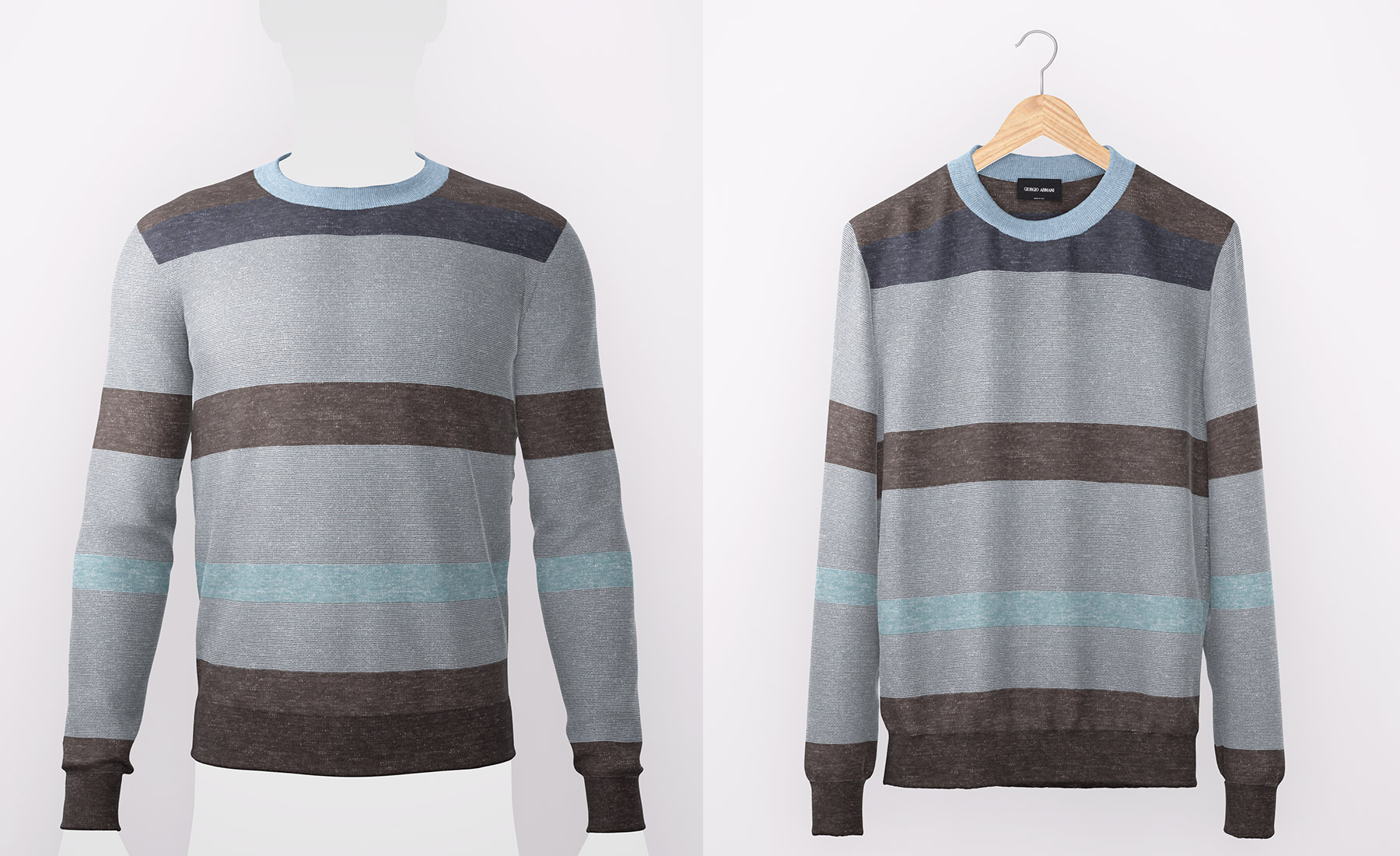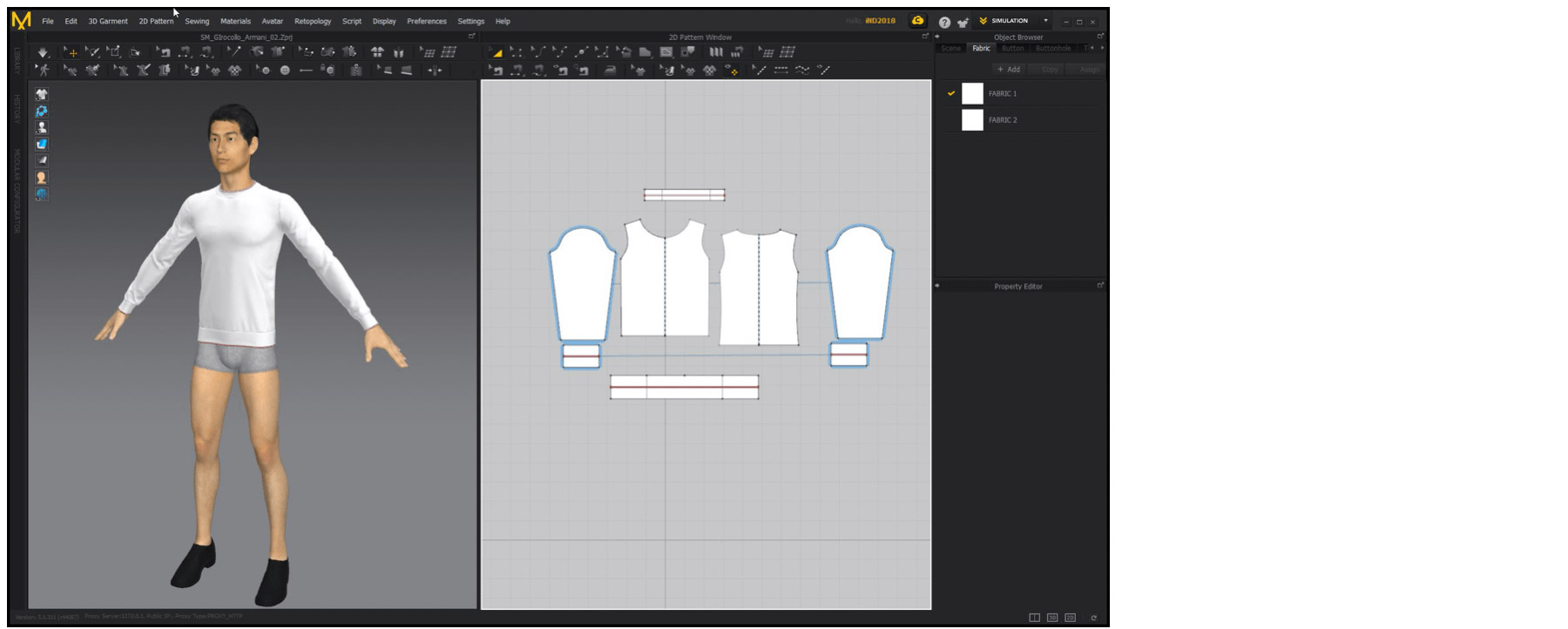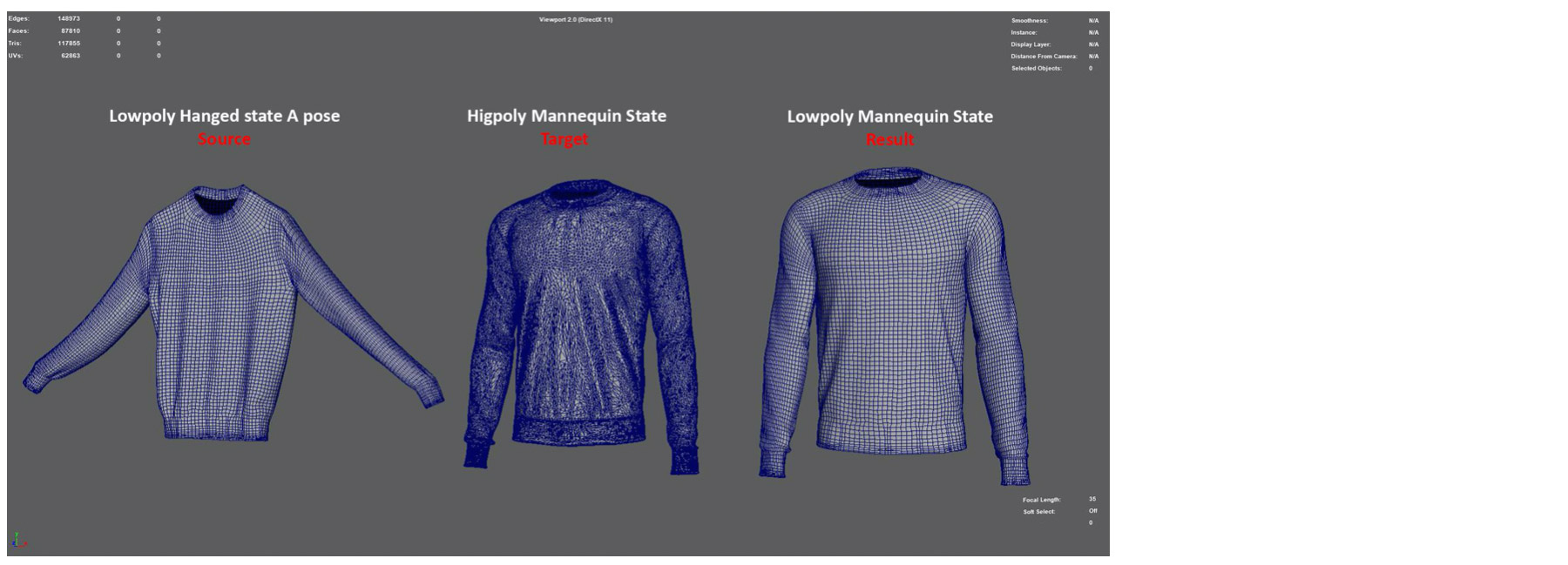Invrsion accelerates industry push to modernize Fashion showrooming experience and digital commerce.
Invrsion is pleased to announce its first 3D clothes prototype, created from a Giorgio Armani jersey.
3D content is poised to become pervasive in the retail market and virtual representations of products will be everywhere: on web, e-commerce, digital catalogs, online communications, AR/VR applications. (Source: The Khronos Group, 3D commerce overview)
Embedding a 3D model leads to an average increase of 5-10 times spent on site due to 3D’s engaging nature. (Source: Sketchfab)
Some of the top names of today’s leading fashion Brands are seeking partners with whom to create virtual brand & e-commerce realities. These hyper-realistic digital settings represent the luxurious physical experiences which have played a critical role in increasing the fame of so many fashion brands. Upcoming campaigns will focus on creating memorable experiences with the goal of wowing current high-value clients, attracting a younger client base and directly driving e-commerce sales of new collections.
Invrsion assists these brands in driving context. Marketers want to represent the “whole world” that surrounds brands’ products by creating disruptive virtual reality experiences which put the product and the brand at the center of the narrative. These experiences not only meet the commercial, brand and consumer objectives for the campaigns, but also set the cornerstone of the foundational partnership that is critical as brands prepare for the upcoming 3D and V-Commerce revolution.
Even prior to Covid-19, the buying process in physical stores has been undergoing radical change. Now, the recent complexities introduced by Covid-19 have dramatically accelerated this process; mandating a shift away from brick-and-mortar towards e-commerce.
This is the time to ramp up the way we create and present web content. The knowledge of 3D digital twins must evolve in a direction of procedural scalability, industrial standards and continuous research in technology.
What are the necessary elements to create the best digital twins?
- Understand how to have the best reference files
- Utilize state of the art 3D
- Adopt industry standards
- Research daily as 3D technology advances frequently
Key to delivery of professional level digital twins is expertise in “optical scanner structured light systems”, photometry and photogrammetry. In addition, the expertise in transforming mathematical CAD files into optimized mesh or the ability to read technical data and use reference pictures, shaders and physical materials are absolutely necessities. This is the foundation onto which everything is built.
Invrsion’s aspiration with this 3D clothes prototype was to evolve the 3D concept model in order to create one unique asset to be viewed and engaged with in 4 states: Mannequin, Hanged, Folded and “Picked”.

In its “picked” state the object will have a physical simulation that has an active behavior.
Once picked inside the VR simulation, the object will react to the motion similarly to the way it would be once it’s picked up in real life.
Understanding references is crucial for the final result, which is a real-time rendering in UE4 (Unreal Engine 4).

The references are obtained mainly from photographic and photogrammetry shoots, videos and measures and manufacturers’ sites and catalogues.
Different lighting setups are used in order to highlight different features of the subject. Generally, the three most popular setups are:
- Soft lighting – for general images, details and photogrammetry
- Polarized lighting – for color base
- Sharp lighting – to show how the Specular works for glossy materials
In addition to lighting, the color checker must be used to ensure accurate colors, especially when shooting in different lighting conditions.
The first step is to have the “A Pose” asset on a mannequin. This asset is going to be the starting point for the creation of multiple states of the same assets.
Invrsion believes that every brand will have the drawing CAD or the digital patterns in the major software as Clo3D Marvelous Designer or similar. This is where we plug in our pipeline to directly import assets into our platform.


The Folded state may not be the most difficult, but it is the most technical one.
Proceeding logically, start from the first assets as usual, put it on the ground and fold it as a real dress, selecting the mesh parts that you want to move with the Select Mesh (Box) Tool. You can help yourself using the internal line to head the folds.
Low poly should be done only on “A pose” state and is automatically inherited by all other states.

Substance Painter & Designer is used to finalize the textures. With the finishing texturing process you will obtain a Base Color, Normal and Ambient Occlusion maps.
This lets you create a single file with all the textures that you’ll need for the texturing process.
You can also create completely separated materials to be used in painter if you need, but in our case we need basecolor, stamps, normals variations only.
The final result is a multichannel highly-evolved 3D Digital Twin that physically reacts to movement.
